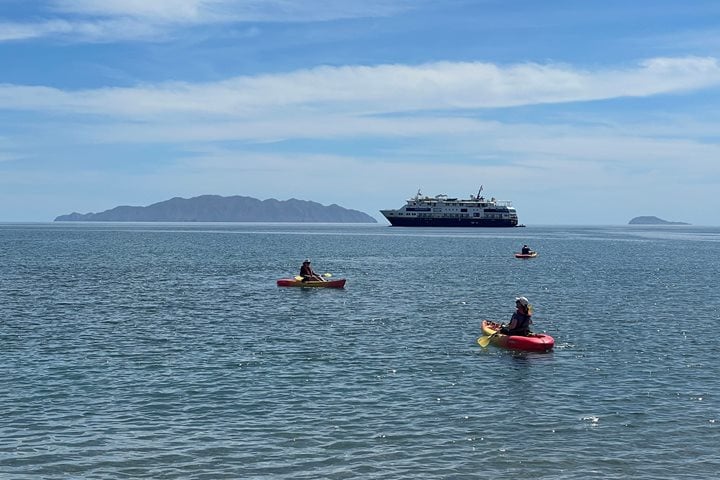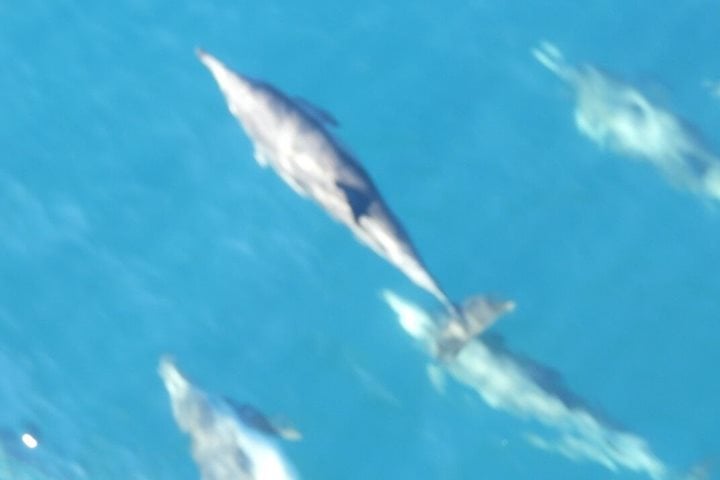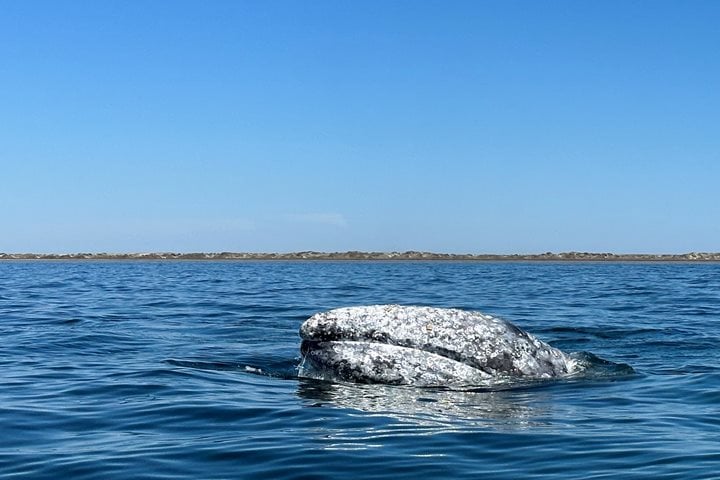The strong northern wind that rocked us the last few days went down this morning and allowed the National Geographic Sea Bird to make its way north to the San Jose Channel with the intention of reaching a locality known as Playa Encantada, at the northwestern side of San Jose Island, for the first activities of today. After breakfast, we disembarked and noticed the magnificent cliffs of the Sierra de la Giganta behind the ship’s silhouette. From this point, the peninsula looked like an extended petrified body going endlessly to the north and south in the company of the blue waters of the Sea of Cortez.
The sand on the beach of Playa Encantada was white and fine and invited us to make a long walk of it. Some brave guests decided to hike along the wide and beautiful arroyo to discover the varied and dense vegetation of the Sonoran Desert, which included thousands of cardon, galloping, and organ pipe cacti, jumping chollas, and others, that became excellent subjects for photography. Some more guests jumped in the kayaks or the stand-up paddleboards to explore the bay. After a splendid morning we came back to the ship for a lunch where the main feature was the very Mexican pozole dish.
In the afternoon the ship continued navigating the San Jose Channel northbound in search of marine mammals. We soon crossed paths with several hundred common dolphins that played their favorite game, a behavior called bow-riding. After a time spent with them, we turned back to reach San Francisco island a few miles to the south. Once on the impressive cove of San Francisco, called the Half Moon Bay, some of the guests climbed the several peaks that crowned the bay, and others walked across the island to the tide pools. Several marine invertebrates were found there, and their secret lives were unveiled by our natural history staff. Our one-week journey in Magdalena Bay and the Gulf of California finished with a gorgeous sunset of orange, green, and red colors.







